740 PHASING IN THE PHAROAH HOUND
PHASING IN THE PHAROAH HOUND
by David Hancock
 of Portugal.jpg) Just over half a century ago I was based in Malta and had the chance to go rabbiting on the small neighbouring island of Gozo. The local hunters there used small bat-eared sighthounds, like small Ibizan Hounds, but in the pack was a red Whippet left behind by a departing British officer and a self-coloured rich tan Manchester Terrier. The speed and agility of these dogs was simply breathtaking, as they negotiated dry stone walls, rocky outcrops and boulders at pace. Years later I was told that dogs like these had been imported into Britain and christened Pharoah Hounds. The Mediterranean littoral abounds with bat-eared sighthounds resembling those on ancient Egyptian artefacts, as the Podencos of the Spanish islands, like the Ibizan Hound, the Cretan Hound, the Portuguese Podengo (in three sizes) and the Cirneco dell'Etna of Sicily demonstrate. Each of these breeds or types exemplify the similar hunting dogs used at the time of the pharaohs and long before then. It’s difficult to fathom how the bat-eared hunting dog from Malta earned this title. The Maltese call them Kelp tal-Fenech or rabbit dogs. Some were imported in the late 1920s but didn’t make their mark. The similar breed from Portugal, then named the Portuguese Warren Hound, now the Portuguese Podengo, had a comparable fate but unlike the Pharoah Hound did not gain a foothold here until the small variety came here quite recently.
Just over half a century ago I was based in Malta and had the chance to go rabbiting on the small neighbouring island of Gozo. The local hunters there used small bat-eared sighthounds, like small Ibizan Hounds, but in the pack was a red Whippet left behind by a departing British officer and a self-coloured rich tan Manchester Terrier. The speed and agility of these dogs was simply breathtaking, as they negotiated dry stone walls, rocky outcrops and boulders at pace. Years later I was told that dogs like these had been imported into Britain and christened Pharoah Hounds. The Mediterranean littoral abounds with bat-eared sighthounds resembling those on ancient Egyptian artefacts, as the Podencos of the Spanish islands, like the Ibizan Hound, the Cretan Hound, the Portuguese Podengo (in three sizes) and the Cirneco dell'Etna of Sicily demonstrate. Each of these breeds or types exemplify the similar hunting dogs used at the time of the pharaohs and long before then. It’s difficult to fathom how the bat-eared hunting dog from Malta earned this title. The Maltese call them Kelp tal-Fenech or rabbit dogs. Some were imported in the late 1920s but didn’t make their mark. The similar breed from Portugal, then named the Portuguese Warren Hound, now the Portuguese Podengo, had a comparable fate but unlike the Pharoah Hound did not gain a foothold here until the small variety came here quite recently.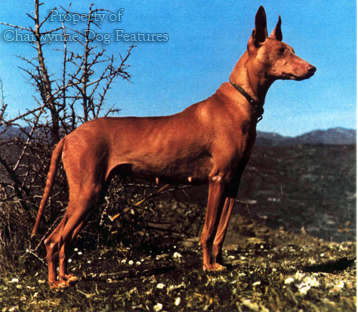
The popularity of the Pharoah Hound here however actually declined from the 37 registered in 1979 down to a mere 9 in 2007 and then up to 38 in 2010. Despite their obvious handsomeness and lack of any exaggeration, the breed has just not gained ground here as their early backers had hoped; perhaps a breed title of Maltese Warren Hound would have sounded more genuine. When I made this point in a magazine article a decade or so ago, I promptly received quite vitriolic letters, separately, from two outraged female fanciers, claiming, quite seriously, that this breed had developed in Malta in total isolation from any other, a relic of ancient Egyptian landings. I merely pointed out that Maltese fanciers held a similar view to mine. I am actually a fan of the breed! The Maltese breeders who down the centuries have conserved this attractive breed have every reason to resent the Pharaonic or Egyptian claims, which incidentally deprives such bat-eared hounds of a thousand years of their history before the title of Pharoah was actually bestowed in ancient Egypt!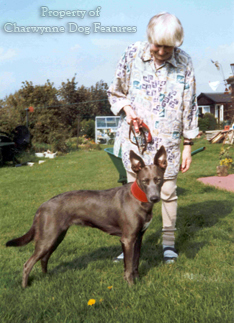
It is also more than foolish to ascribe a two thousand year unbroken lineage to any breed of dog, especially in the Middle East. The journal Science published in 2004 the findings of an enquiry into the antiquity of dog breeds, concluding: ‘…several breeds commonly believed to be of ancient origin, such as the Pharoah Hound and the Ibizan Hound…are often thought to be the oldest of all dog breeds descending directly from the ancient Egyptian dogs drawn on tomb walls more than 5000 years ago. Our results indicate, however, that these two breeds have been recreated in more recent times, from combinations of other breeds. Thus, although their appearance matches the ancient Egyptian sighthounds, the genomes do not.’ Perhaps a copy of that report should be sent to my two angry lady correspondents!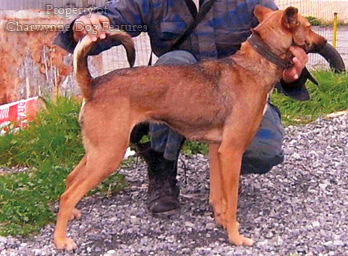
The hound developed by Maltese hunters to catch rabbits is strikingly like its Sicilian equivalent, the Cirneco dell’Etna, now recognized here under that breed name. It would very sensible if the Pharoah Hound were to be re-registered as the Kelb tal-Fenech and the Maltese given due credit for their handsome breed. The Portuguese Podengo, the small variety, not bearing an invented breed title, attracted twice as many registrations here as the Pharoah Hound in 2010. It is worth noting that the Ibizan Hound, despite being long established here, only registered around 100 in total in the whole of the last decade, a sad sign of lacking popularity. Yet our sportsmen are quite willing nowadays to make use of foreign breeds, as the HPRs show in the gundog world; the scenthound breeders have long valued overseas blood, but only on merit. What can Pharoah Hounds bring to our sporting table? 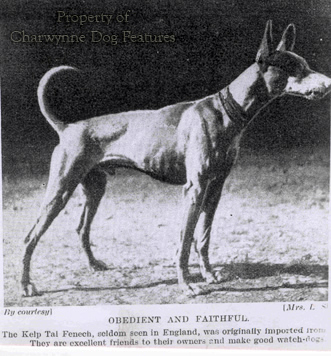
The hunting dogs on Gozo had superb feet, able to cope with stony terrain, dry stone walls and cliff tops. They were much more all-round hunting dogs than sighthounds. They had quite remarkable hearing, with their wide upstanding ears acting like radio-receivers and supporting the search for air scent. I have seen lurchers here with bat-ears but in a colder climate they are a liability. Prick-eared terriers have been claimed by some to have enhanced hearing as a direct result of their ear-construction. A study in America a few years back found that terriers hunted more by ear than the nose, although they excel us in both these senses. Lurcher breeders however would be wise to note the very limited availability of breeding stock, stock that has had firm words of criticism at recent dog shows. A judge in 2009 reported finding narrow fronts and flat feet in the breed. Three years earlier, a judge reported: ‘There were few that had that had the combination of elegance and power so essential in a sighthound and some tended to be cloddy, lacking breed type, but equally there is a lack of strength in fronts particularly in width of chest, and through the pasterns, so essential in a working hound.’
I understand that the FCI, the international kennel club, which was responsible for the breed title of Pharoah Hound, has now moved the breed’s grouping away from sighthounds and across to ‘primitive types’, which hardly helps their perpetuation as hounds. I believe that our own KC couldn’t accept the breed being described as rabbit dogs, despite that being the translation of their long-held Maltese title. How is it that you can register deerhounds, foxhounds, wolfhounds and badgerdogs but not rabbit dogs? The Kennel Club’s sighthound list contains such exotics as Afghan Hounds, Borzois, Salukis, Sloughis and Ibizan Hounds, why not Maltese Hounds or even Gozoan Hounds! Breed titles can contribute to the confusion of breeds as the allocation of the Spanish Water Dog to the Gundog Group, but the Portuguese Water Dog to the Utility Group, illustrates. If the Portuguese Podengo can have warren hound in brackets after its accepted KC title, perhaps the Kelb tal-Fenech could have Maltese Warren Hound in brackets after its correct name.
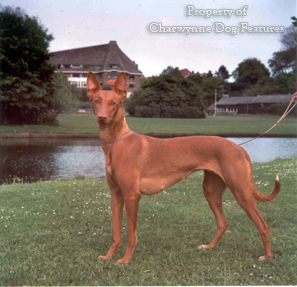 My memory of the Malta/Gozo hounds is of a smaller (around 20 inches at the withers), leaner, finer-boned, less substantial, stronger-headed, sturdier less elegant much more workmanlike little hound, with amazing agility. It is understandable for dogs bred here to grow bigger and become more refined, once an elegant appearance was sought for show ring presence, but if breed type is precious then the model of the Maltese Rabbit Dog, as perceived and shaped by its pioneer native breeders must surely count. An elegant sighthound-like anatomy may be eye-catching but this hound is rather more than a sighthound, it’s a much more versatile hunting dog with great staying power. There is also a mistaken tendency to ape the Egyptian portrayals of bat-eared hounds in the seeking of a reshaped Pharoah Hound. I believe the Canadian Pharoah Hound Club’s magazine is actually called The Anubis News!
My memory of the Malta/Gozo hounds is of a smaller (around 20 inches at the withers), leaner, finer-boned, less substantial, stronger-headed, sturdier less elegant much more workmanlike little hound, with amazing agility. It is understandable for dogs bred here to grow bigger and become more refined, once an elegant appearance was sought for show ring presence, but if breed type is precious then the model of the Maltese Rabbit Dog, as perceived and shaped by its pioneer native breeders must surely count. An elegant sighthound-like anatomy may be eye-catching but this hound is rather more than a sighthound, it’s a much more versatile hunting dog with great staying power. There is also a mistaken tendency to ape the Egyptian portrayals of bat-eared hounds in the seeking of a reshaped Pharoah Hound. I believe the Canadian Pharoah Hound Club’s magazine is actually called The Anubis News!
A decade ago, an enlightened judge wrote, after assessing the entry at the club’s summer show: ‘Breeders, what have you done to this lovely breed? The heads are awful…Briskets seem to be a thing of the past…where has it all gone wrong?’ Sadly, those heartfelt words could be applied to quite a number of pedigree sporting breed show exhibits. The new emphasis on function in the exhibition world can only do good and I hope it is sternly seen through. The moans about losing breed type are usually emitted by the lazier less honest breeders; the hunters on Gozo all those years ago didn’t mention it, perhaps keener on the performance of their excellent hounds.